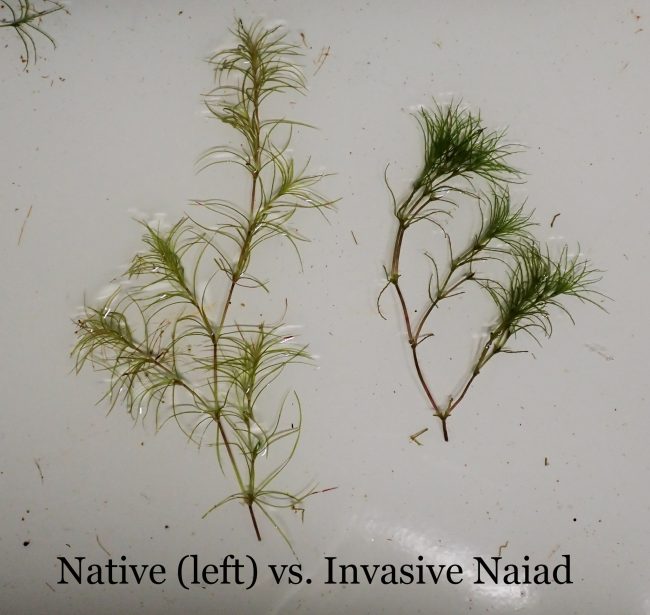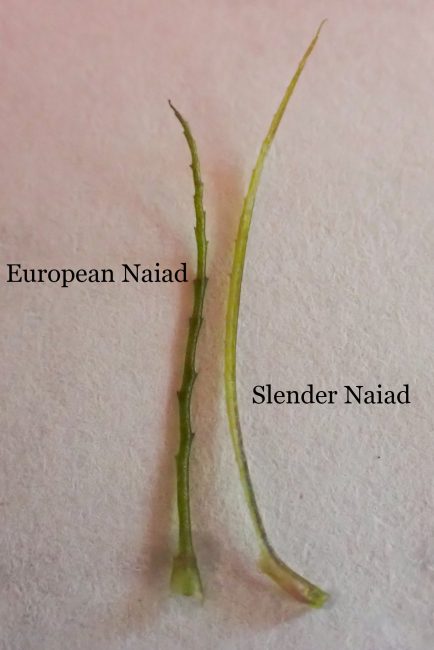European naiad is arguably the most difficult invasive plant to control in Maine. Herbicide treatments and manual removal efforts are being used in Northeast and Milton Ponds on the border with New Hampshire. European Naiad was recently discovered in Lake Arrowhead, with survey efforts and management plans ongoing. This plant produces seeds, which are tiny and spread easily. These seeds can stick to the sides of boats, and get into bilge water, and are nearly impossible to spot. Thoroughly cleaning and draining your boat and trailer, especially when leaving these infested lakes, is critical to preventing the spread to new waterbodies.
Brittle naiad, also known as brittle waternymph, grows tufts of spiny, stiff, arched leaves on stems that may be up to 2.5 meters long. Unlike native naiads, the serrations on brittle naiad leaves are visible without magnification. Spindle-shaped seeds grow in leaf axils; flowers are inconspicuous. Brittle naiad was introduced to the United States from Europe in the early 1900s. It is a true annual, reproducing primarily by seed. Relatively small infestations may produce tens of millions of seeds that are dispersed on air and water currents. It has been confirmed in Maine, New Hampshire, Vermont and Massachusetts.
As you can see in the photos below, it is nearly impossible to tell European Naiad from our native Slender Naiad. A magnified view of the leaves is needed to see the more pronounced “teeth” on the invasive naiad. This is why it is important to not assume a plant is native.

